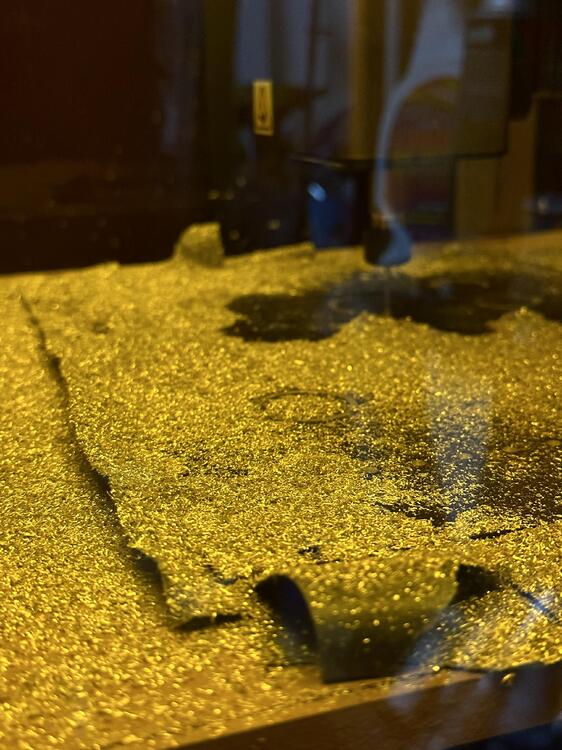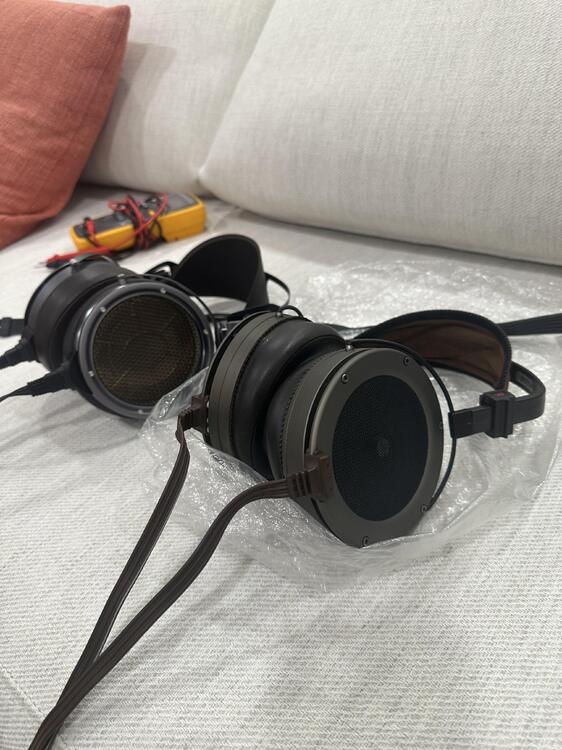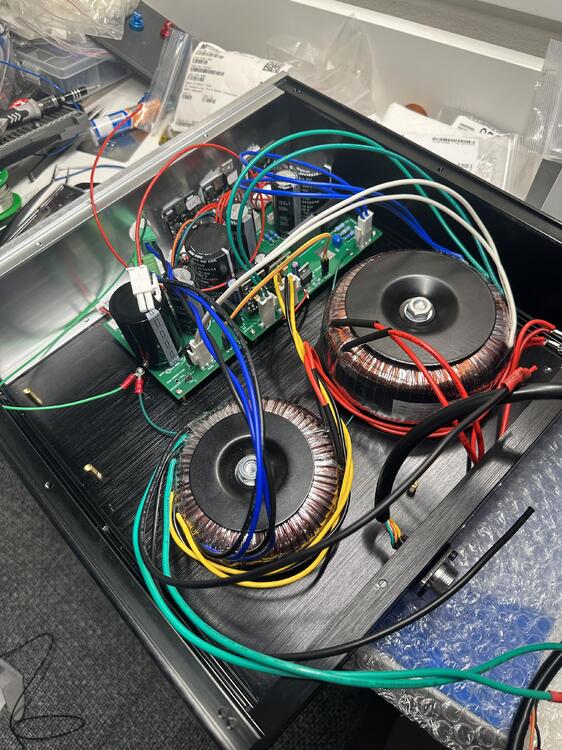Leaderboard
Popular Content
Showing content with the highest reputation on 03/11/2025 in all areas
-
Listened to a couple things, one of which is a "catharsis" recording for me. Back in 2001, Karen was first diagnosed with breast cancer. Our son Andrew was all of 1.5 years old, and I imagined him not having a mother. This album by Beth Nielsen Chapman was done after her husband died of cancer. I spent many a night listening to this, bawling my eyes out. To say the least, more tears when I pulled it out again. The London Grammar album is a great one, just listened to that one again for enjoyment.8 points
-
A little late for Ravel's 150th, but this was my great (ahem) gateway to Ravel's orchestrating genius. I heard his orchestration before I heard Mussorgsky's solo piano version, and have since fallen in love with his genius. Even from his treatment of the opening Promenade, there's a bit more breadth, a bit more gravitas, a bit more there there. Not afraid to solo instruments, or interleave solo instruments against a delicate backdrop of small subsets of the orchestra, it is a masterpiece of restraint. cf. "The Old Castle" movement All the better to contrast the bombast. cf. "The Great Gates of Kiev" movement3 points
-
2 points
-
2 points
-
Here is a long post I wrote, but may have a little help to someone who tries to build the T2 mini by JoaMat. Transformer Specifications: There are two transformers in total. Primary: 120V(USA or other countries like 230V) Secondary: 320V 0.25A 365V 0.25A 190V 0.25A 16-0-16V 0.5A 6.3V 4A × 2 6.3V 2A × 2 I highly recommend adding a soft-start circuit because the inrush current generated by the transformers is significant. High inrush current can easily blow the fuse and cause long-term stress on the filter capacitors. If a soft-start circuit is not added, a high-current fuse will be required, but that would compromise the protective function of the fuse. Chassis: I housed the power supply and amplifier in two separate chassis. For the PSU section, I used Kerry-designed GRHV and GRLV. Pay attention to the chassis height clearance to ensure it can accommodate the transformers. The specific drilling hole specifications can be found in the current thread—I recall JoaMat mentioned them somewhere. All panel holes were made using a desktop CNC router. I believe it's a good investment to have a desktop CNC router, as it ensures precise hole dimensions. The text and graphics on the panels were also laser-engraved using the same machine. Watching the CNC mill parts is quite satisfying. Power Supply: Three different high-voltage power sources are required: -460V, +400V, +220V ±15V for the servo For details on Kerry Design’s GRHV/GRLV, refer to this link: GoldenReference Low Voltage Power Supply Two mainboards are required—one for -460V and +400V, and another for +220V, leaving the rest of the board empty. To save space, I designed a new PCB specifically for the +220V rail. Notes: If using Kerry Design’s GRHV/GRLV, I suggest disabling the high-voltage delay function. In my tests, the 220V rail initially outputs only 20V, while the 460V and 400V rails start around 200-300V before reaching their nominal voltages after approximately 37 seconds (time varies based on capacitor size). Although this delay is short, it prevents the servo from functioning correctly. During this period, the balanced voltage remains around 200V, which could be harmful to headphones over time. A better solution is to add a dedicated tube warm-up circuit. Output voltages may have minor deviations. For instance, the actual 220V rail might measure around 217V. Even with 0.1% tolerance resistors, small variations can be amplified. A good approach is to use a trimmer resistor—for example, replacing a 20kΩ resistor with an 18kΩ resistor in series with a 2kΩ trimmer. Amplifier Assembly: SMD components should be installed first, followed by through-hole components and tube sockets. To simplify the process, I used a paste stencil and a heating plate, which significantly saves time. For the other side, I used a syringe and a heat gun. A more efficient method would be using a heating plate for both sides, with two different solder pastes. For example, using 183°C solder paste for one side and 138°C solder paste for the other. Notes: Don’t forget to connect the +15V jumper and the servo jumper. Otherwise, the balanced voltage may stay at 400V, potentially damaging the servo. This damage may not be immediately obvious, but you might notice the servo stabilizing more slowly, tiny background noise, or excessive sensitivity of the EL34 filament power supply to external interference, leading to noticeable microphonic effects. The T2 Mini’s heat dissipation is moderate, somewhere between the Grounded Grid and KGSSHV. If your enclosure is large enough (not wooden), power transistors like KSA1156 can be directly mounted to the chassis. However, a better approach is to use an L-bracket mounted to a heatsink. My enclosure measures 300mm × 297mm × 62mm, resulting in an internal temperature of around 45°C. Do not use this approach for KGSSHV, as SiCFETs generate a significant amount of heat. 01N100D must be properly insulated. Use single-point grounding as much as possible to avoid ground loops. If using aviation connectors, ensure they are rated for at least 500V. HN4C51J and HN4A51J look very similar—don’t mix them up. Ensure correct polarity for LEDs and 1N914 diodes. Test all components before powering on to verify continuity and check for shorts. For EL34 filament wiring, use at least 18AWG wire. One Last thing: Enjoy the build🙃2 points
-
Thank you Shawn. Many words of wisdom and common sense. And quite badass to have CNC and laser etching machines at home 😀1 point
-
1 point
-
Delightful. Retrospective on its creation: https://www.sfgate.com/sf-culture/article/san-francisco-sony-bouncy-ball-ad-20204385.php1 point
-
1 point
-
Wool - Hugh Howey. Fun book. They adapted the first half of this one in to the TV show "Silo". I do enjoy the story archetypes where they drop you in a world with lots of strange stuff where things start happening and you have to keep reading to figure out what the heck is going on.1 point
















